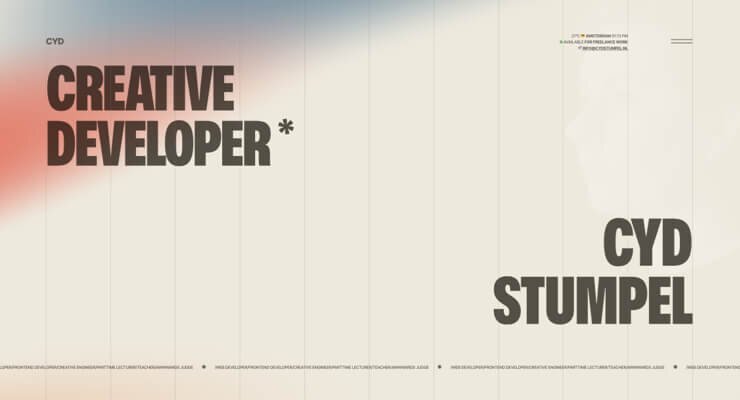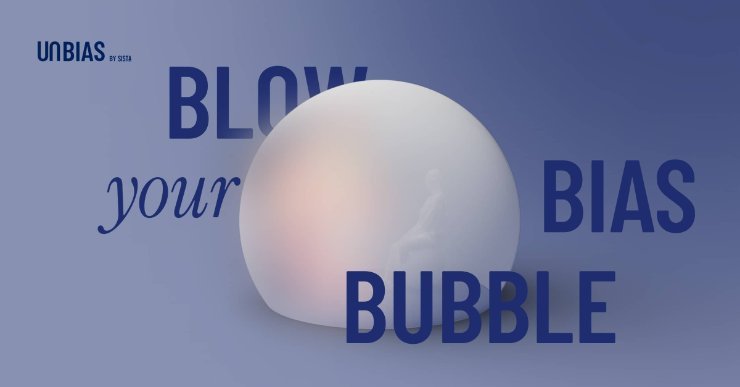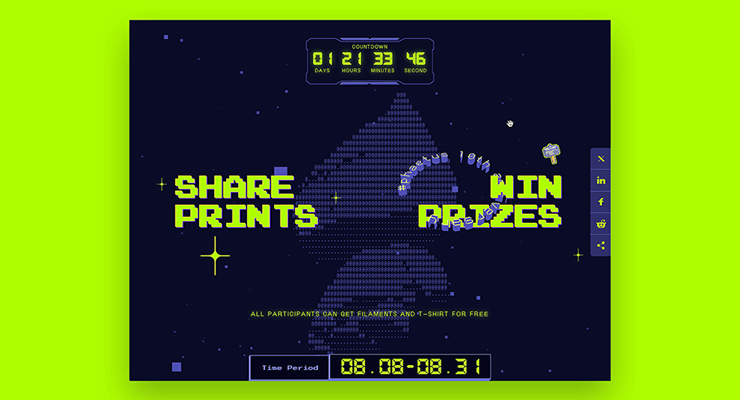
Update: don't miss our guest post on css-tricks.com, Myth Busting: CSS Animations vs. JavaScript which provides some additional data, visual examples, and a speed test focused on this topic.
 jQuery is the 700-pound gorilla that has been driving lots of animation on the web for years, but let's see how it fares when it steps into the ring with the feisty GSAP (GreenSock Animation Platform) which gained its fame in the Flash world and is now flexing its greased-up muscles in JavaScript. Before we put the gloves on, we need to make it clear that we've got the utmost respect for jQuery, its authors, and its community of users (to which we belong). It's a fantastic tool that we highly recommend for non-animation tasks. This tongue-in-cheek "cage match" is solely focused on animation.
jQuery is the 700-pound gorilla that has been driving lots of animation on the web for years, but let's see how it fares when it steps into the ring with the feisty GSAP (GreenSock Animation Platform) which gained its fame in the Flash world and is now flexing its greased-up muscles in JavaScript. Before we put the gloves on, we need to make it clear that we've got the utmost respect for jQuery, its authors, and its community of users (to which we belong). It's a fantastic tool that we highly recommend for non-animation tasks. This tongue-in-cheek "cage match" is solely focused on animation.
Performance
 Performance is paramount, especially on mobile devices with sluggish processors. Silky smooth animation is the hallmark of any animation platform worth its weight. This round wasn't even close. GSAP was up to 20 TIMES faster than jQuery under heavy stress. See a speed comparison for yourself or make your own.
Performance is paramount, especially on mobile devices with sluggish processors. Silky smooth animation is the hallmark of any animation platform worth its weight. This round wasn't even close. GSAP was up to 20 TIMES faster than jQuery under heavy stress. See a speed comparison for yourself or make your own.
Performance winner: GSAP
Controls
 With jQuery, you can stop an animation but that's about it. Some 3rd party plugins add resume capability, but jQuery takes a pounding in this round. GSAP's object oriented architecture allows you to pause, resume, reverse, restart, or jump to any spot in any tween. Even adjust timeScale on the fly for slow motion or fastforward effects. Place tweens in a timeline with precise scheduling (including overlaps or gaps) and then control the whole thing just like it's a single tween. All of the easing and effects remain perfectly intact as you reverse, pause, adjust timeScale, etc. And you can even kill individual portions of a tween anytime (like if a tween is controlling both "top" and "left" properties, you can kill "left" while "top" continues). Put labels in a timeline to mark important spots and seek() to them anytime.
With jQuery, you can stop an animation but that's about it. Some 3rd party plugins add resume capability, but jQuery takes a pounding in this round. GSAP's object oriented architecture allows you to pause, resume, reverse, restart, or jump to any spot in any tween. Even adjust timeScale on the fly for slow motion or fastforward effects. Place tweens in a timeline with precise scheduling (including overlaps or gaps) and then control the whole thing just like it's a single tween. All of the easing and effects remain perfectly intact as you reverse, pause, adjust timeScale, etc. And you can even kill individual portions of a tween anytime (like if a tween is controlling both "top" and "left" properties, you can kill "left" while "top" continues). Put labels in a timeline to mark important spots and seek() to them anytime.
Imagine trying to build the example below using jQuery. It would be virtually impossible. With GSAP, it's easy. In fact, all of the animation is done with 2 lines of code. Drag the slider, click the buttons below, and see how easy it is to control the sequenced animation.
See the Pen Impossible with jQuery: controls (used in jquery cagematch) by GreenSock (@GreenSock) on CodePen.
Controls winner: GSAP
Tweenable Properties
jQuery.animate() works with basic numeric properties, but that's about it. If you want to do more, you'll need to rely on lots of 3rd party plugins which may have spotty support or unresolved bugs. GSAP's CSSPlugin handles almost anything you throw at it while protecting you from various browser bugs and prefix requirements.
| GSAP | jQuery | |
|
|
||
| Basic numeric css properties like left, top, opacity, fontSize, etc. | Supported | Supported |
| Colors like backgroundColor, borderColor, etc. | Supported | Supported with 3rd party plugins |
| backgroundPosition | Supported | Supported with 3rd party plugins |
| boxShadow | Supported | Supported with 3rd party plugins |
| clip | Supported | Supported with 3rd party plugins |
| textShadow (including multiple text shadows) | Supported | Partially supported with 3rd party plugins |
| 2D transforms like rotation, scaleX, scaleY, x, y, skewX, and skewY, including 2D transformOrigin and directional rotation functionality | Supported | Partially supported with 3rd party plugins |
| 3D transforms like rotationY rotationX, z, and perspective, including 3D transformOrigin and directional rotation functionality | Supported | Partially supported wiht 3rd party plugins |
| borderRadius (without the need to define each corner and use browser prefixes) | Supported | Partially supported with 3rd party plugins |
| className allows you to define a className (or use "+=" or "-=" to add/remove a class) and have the engine figure out which properties are different and animate the differences using whatever ease and duration you want. | Supported | Partially supported with 3rd party plugins |
Tweenable properties winner: GSAP
Workflow
When you're creating fun and interesting animations, workflow is critical. You need to be able to quickly build sequences, stagger start times, overlap tweens, experiment with eases, leverage various callbacks and labels, and create concise code. You need to be able to modularize your code by creating functions that each spit back an animation object (tween or timeline) which can be inserted into another timeline at a precise time. You need a flexible, powerful system that lets you experiment without wasting hours wrestling with a limited tool set. jQuery has some nice simple convenience methods like show(), hide(), fadeIn(), and fadeOut(), but GSAP bloodies its nose in this round:
| GSAP | jQuery | |
|
|
||
| Easily create sequences (even with overlapping animations) that can be controlled as a whole | Supported | Unupported |
| Flexible object-oriented architecture that allows animations to be nested inside other animations as deeply as you want | Supported | Unupported |
| Animate things into place (backwards) with convenience methods like from() and staggerFrom() | Supported | Unupported |
| Accommodate virtually any ease including Bounce, Elastic, SlowMo, RoughEase, SteppedEase, etc. | Supported | Unupported |
| Create a staggered animation effect for an array of objects using one method call (like staggerTo(), staggerFrom(), or staggerFromTo()) | Supported | Unupported |
| Easily repeat and/or yoyo a tween a specific number of times (or indefinitely) without resorting to callbacks or redundant code | Supported | Unupported |
| Callbacks for when a tween or timeline starts, updates, completes, repeats, and finishes reversing, plus optionally pass any number of parameters to those callbacks | Supported | Unupported |
| Place labels at specific times in a sequence so that you can seek() to them and/or insert animations there. | Supported | Unupported |
| Animate any numeric property of any JavaScript object, not just DOM elements | Supported | Unupported |
| Call a function whenever the entire platform finishes updating on each frame (like for a game loop) | Supported | Unupported |
Workflow winner: GSAP
Compatibility
 Browser inconsistencies and bugs are the bane of our existence as developers. Whether it's the way Internet Explorer 8 implements opacity or Safari's transformOrigin bug that wreaks havok on 3D transforms or the fact that browser prefixes are required to enable many of the more modern browser features, you want your animations to "just work" without having to learn all the annoying hacks. jQuery does a great job of delivering cross-browser consistency overall, but when it comes to animation it falls a bit short mainly because it doesn't even attempt to handle the more modern CSS properties.
Browser inconsistencies and bugs are the bane of our existence as developers. Whether it's the way Internet Explorer 8 implements opacity or Safari's transformOrigin bug that wreaks havok on 3D transforms or the fact that browser prefixes are required to enable many of the more modern browser features, you want your animations to "just work" without having to learn all the annoying hacks. jQuery does a great job of delivering cross-browser consistency overall, but when it comes to animation it falls a bit short mainly because it doesn't even attempt to handle the more modern CSS properties.
No JavaScript framework can work miracles and suddenly make IE8 do fluid 3D transforms, for example, but GSAP implements a bunch of workarounds under the hood to solve problems wherever possible. It can do 2D transforms like rotation, scaleX, scaleY, x, y, skewX, and skewY all the way back to IE6 including transformOrigin and directional rotation functionality! Plus it works around scores of other browser issues so that you can focus on the important stuff.
Compatibility winner: GSAP
Popularity
jQuery has been around for a long time and has gained incredible popularity because it does many things well. It's like the Swiss Army knife of JavaScript. There probably isn't a single JavaScript tool that's more popular than jQuery, and GSAP is no exception. As the new kid on the block, GSAP is gonna have to prove itself in the JavaScript community just like it did in the Flash community before it's crowned the undisputed champion.
Popularity winner: jQuery
Conflict management
 What happens if there's already a tween running that's controlling a particular object's property and a competing tween begins? jQuery does nothing to manage the conflict - the original tween keeps running. For example, let's say you're animating an element's "top" to 100px and that tween still has 2 seconds left before it's done, and another tween starts running that animates the same element's "top" to 0px over the course of 1 second. It would tween to 0px and then immediately jump to almost 100px and finish that [first] tween. Yuck. GSAP automatically senses these conflicts and handles them behind the scenes. In this case, it would kill the "top" portion of the first tween as soon as the second tween begins. Plus there are several other overwrite modes you can choose from if that's not the behavior you want.
What happens if there's already a tween running that's controlling a particular object's property and a competing tween begins? jQuery does nothing to manage the conflict - the original tween keeps running. For example, let's say you're animating an element's "top" to 100px and that tween still has 2 seconds left before it's done, and another tween starts running that animates the same element's "top" to 0px over the course of 1 second. It would tween to 0px and then immediately jump to almost 100px and finish that [first] tween. Yuck. GSAP automatically senses these conflicts and handles them behind the scenes. In this case, it would kill the "top" portion of the first tween as soon as the second tween begins. Plus there are several other overwrite modes you can choose from if that's not the behavior you want.
Conflict management winner: GSAP
Support
 Both jQuery and GSAP have thriving support forums, but since right now jQuery has a massive user base, you're very likely to find someone with an answer to your question. Even though the GreenSock forums rarely have a question that remains unanswered for more than 24 hours, jQuery's pervasiveness gives it an edge here. On the other hand, GreenSock's forums are manned by paid staff (including the author of the platform), so you're quite likely to get solid answers there. Add to that the fact that GreenSock has a track record of being much more agile in terms of squashing bugs and releasing updates than jQuery, so we'll call this round a tie.
Both jQuery and GSAP have thriving support forums, but since right now jQuery has a massive user base, you're very likely to find someone with an answer to your question. Even though the GreenSock forums rarely have a question that remains unanswered for more than 24 hours, jQuery's pervasiveness gives it an edge here. On the other hand, GreenSock's forums are manned by paid staff (including the author of the platform), so you're quite likely to get solid answers there. Add to that the fact that GreenSock has a track record of being much more agile in terms of squashing bugs and releasing updates than jQuery, so we'll call this round a tie.
Support winner: tie
Expandability
jQuery and GSAP both offer a plugin architecture, but since jQuery has been out much longer and gained so much popularity, there are numerous plugins available. Some are good, some are not, but there is a thriving community of plugin developers out there. Even though technically they're both equally expandable, the sheer number of plugins currently available for jQuery give it the advantage in this round.
Expandability winner: jQuery
Learning resources
 Again, jQuery's popularity trumps anything GSAP could throw at it right now. There are lots of tutorials, videos, and articles about jQuery whereas GSAP is new to the game. GreenSock is being aggressive about putting together solid resources (like the Jump Start tour) and the community is crankin' out some great articles and videos too, but jQuery scores the win in this round.
Again, jQuery's popularity trumps anything GSAP could throw at it right now. There are lots of tutorials, videos, and articles about jQuery whereas GSAP is new to the game. GreenSock is being aggressive about putting together solid resources (like the Jump Start tour) and the community is crankin' out some great articles and videos too, but jQuery scores the win in this round.
Learning resources winner: jQuery
Price & license
 Both jQuery and GSAP are completely free for almost every type of usage and both allow you to edit the raw source code to fix bugs (if that's something you need to do). If you plan to use GSAP in a product/app/site/game for which a fee is collected from multiple customers, you need the commercial license that comes with "Business Green" Club GreenSock memberships (one-off commercial projects don't need the special license). It's actually a more business-friendly license in many ways than a typical open source license that offers no warranties or backing of any kind or imposes code sharing or credit requirements. GreenSock's licensing model provides a small funding mechanism that benefits the entire user base because it empowers continued innovation and support, keeping it free for the vast majority of users. See the licensing page for details. jQuery employs an MIT license and is free for virtually all uses. As much as we all like "free" software, there's always a cost somewhere. jQuery has a few large corporate sponsors that have helped keep it viable. Both jQuery and GreenSock have long track records of delivering updates, bug fixes, and new features (GreenSock is newer to JavaScript, but served the Flash community since around 2006). Both count some of the largest companies in the world among their user base. Although there are some clear benefits of GreenSocks' license over jQuery's, we'll give this round to jQuery because it is technically "free" in more scenarios than GSAP.
Both jQuery and GSAP are completely free for almost every type of usage and both allow you to edit the raw source code to fix bugs (if that's something you need to do). If you plan to use GSAP in a product/app/site/game for which a fee is collected from multiple customers, you need the commercial license that comes with "Business Green" Club GreenSock memberships (one-off commercial projects don't need the special license). It's actually a more business-friendly license in many ways than a typical open source license that offers no warranties or backing of any kind or imposes code sharing or credit requirements. GreenSock's licensing model provides a small funding mechanism that benefits the entire user base because it empowers continued innovation and support, keeping it free for the vast majority of users. See the licensing page for details. jQuery employs an MIT license and is free for virtually all uses. As much as we all like "free" software, there's always a cost somewhere. jQuery has a few large corporate sponsors that have helped keep it viable. Both jQuery and GreenSock have long track records of delivering updates, bug fixes, and new features (GreenSock is newer to JavaScript, but served the Flash community since around 2006). Both count some of the largest companies in the world among their user base. Although there are some clear benefits of GreenSocks' license over jQuery's, we'll give this round to jQuery because it is technically "free" in more scenarios than GSAP.
Price & license winner: jQuery
File size
jQuery weighs in at about 32kb gzipped and minified whereas GSAP's TweenLite and CSSPlugin are about half that combined. So in half the size, you're getting significantly more animation capabilities and speed. GSAP is built in a modular fashion that allows you to use just the parts that you need. Of course jQuery serves many other purposes beyond animation, but in this cage match we're focused on animation. Even if you add up TweenLite, TimelineLite, TimelineMax, TweenMax, EasePack, CSSPlugin, BezierPlugin, AttrPlugin, DirectionalRotationPlugin, and RoundPropsPlugin, it's still almost 20% less than jQuery.
File size winner: GSAP
Flexibility
 Let's face it: any tweening engine can handle the basics of animating one value to another, but it's really the details and advanced features that make a robust platform shine. GSAP crushes jQuery when it comes to delivering a refined, professional-grade tool set that's truly flexible. All these conveniences are baked into GSAP (no 3rd party plugins required):
Let's face it: any tweening engine can handle the basics of animating one value to another, but it's really the details and advanced features that make a robust platform shine. GSAP crushes jQuery when it comes to delivering a refined, professional-grade tool set that's truly flexible. All these conveniences are baked into GSAP (no 3rd party plugins required):
- Tween any numeric property of any object.
- Optionally round values to the nearest integer to make sure they're always landing on whole pixels/values.
- Animate along Bezier curves, even rotating along with the path or plotting a smoothly curved Bezier through a set of points you provide (including 3D!). GSAP's Bezier system is super flexible in that it's not just for x/y/z coordinates - it can handle ANY set of properties. Plus it will automatically adjust the movement so that it's correctly proportioned the entire way, avoiding a common problem that plagues Bezier animation systems. You can define Bezier data as Cubic or Quadratic or raw anchor points.
- Animate any color property of any JavaScript object (not just DOM elements). Define colors in any of the common formats like #F00 or #FF0000 or rgb(255,0,0) or rgba(255,0,0,1) or hsl(30, 50%, 80%) or hsla(30, 50%, 80%, 0.5) or "red".
- Set a custom fps (frames per second) for the entire engine. The default is 60fps.
- All tweens are perfectly synchronized (unlike many other tweening engines).
- Use the modern requestAnimationFrame API to drive refreshes or a standard setTimeout (default is requestAnimationFrame with a fallback to setTimeout)
- Tons of easing options including proprietary SlowMo, RoughEase and SteppedEase along with all the industry standards
- Animate css style sheet rules themselves with CSSRulePlugin
- Animate the rotation of an object in a specific direction (clockwise, counter-clockwise, or whichever is shortest) by appending "_cw", "_ccw", and "_short" to the value.
- You can tween getter/setter methods, not just properties. For example, myObject.getProp() and myObject.setProp() can be tweened like TweenLite.to(myObject, 1, {setProp:10}); and it will automatically recognize that it's a method and call getProp() to get the current value when the tween starts. Same for jQuery-style getters/setters that use a shared method like myObject.prop().
- You can even tween another tween or timeline! For example, TweenLite.to(otherTween, 1, {timeScale:0.5}) would animate otherTween.timeScale to 0.5 over the course of 1 second. You can even scrub the virtual playhead of one tween/timeine with another tween by animating its "time".
- Use plugins like ThrowPropsPlugin for momentum-based motion, and RaphaelPlugin, EaselPlugin, and KineticPlugin for those [canvas or svg] libraries (Raphael, EaselJS, and KineticJS). Plus there are physics-based plugins like Phyics2DPlugin and PhysicsPropsPlugin as well as a fun ScrambleTextPlugin for Club GreenSock members.
Flexibility winner: GSAP

Conclusion
jQuery eeked out a few decent rounds, but ultimately GSAP left it lying on the mat in a pool of its own blood. Of course we're slightly biased, but check out the facts for yourself. Kick the tires. Audition GSAP on your next project. See how it feels. If you only need simple fades or very basic animation, jQuery is probably just fine. In fact, its fadeIn() and fadeOut() methods are quite convenient. However, what happens when your client wants to do something more expressive? Or what if they start complaining that animation isn't smooth on mobile devices? Why not build on a solid foundation to begin with so that you don't find yourself having to rewrite all your animation code? If you want professional-grade scripted animation, look no further. To get started fast, check out our Jump Start tour.
Update: there's now a jquery.gsap.js plugin that allows you to continue using jQuery.animate() but have GSAP drive the animations under the hood, thus delivering much better speed plus a bunch of new properties that you can tween (like colors, 2D and 3D transforms, boxShadow, textShadow, borderRadius, clip, etc.). Read more about the plugin here.
Recommended reading:
- Main GSAP JS page
- jQuery.animate() with GSAP: get the jquery.gsap.js plugin!
- Why GSAP? A practical guide for developers
- Jump Start: GSAP JS
- CSS3 transitions vs GSAP: cage match
- Speed comparison
- 3D Transforms & More CSS3 Goodies Arrive in GSAP JS









Recommended Comments
There are no comments to display.
Create an account or sign in to comment
You need to be a member in order to leave a comment
Create an account
Sign up for a new account in our community. It's easy!
Register a new accountSign in
Already have an account? Sign in here.
Sign In Now